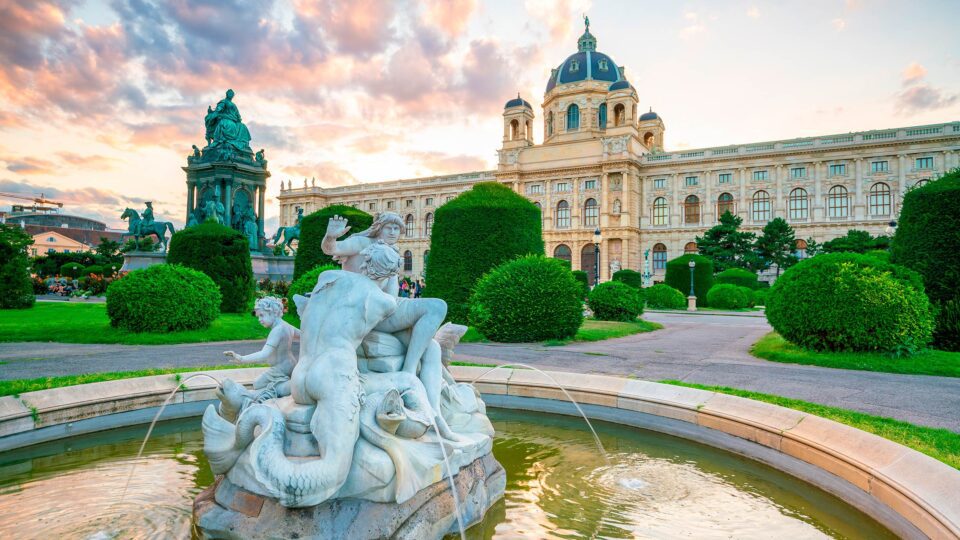It is best to start exploring the city with its palace complexes and Catholic churches. Both are located on elevations, and the buildings have their own observation decks. From these places, you can see historical monuments well, whose detailed examination you may not necessarily include in your sightseeing program.
If you are having a hard time deciding what to see in Vienna in 3 days on your own, start your journey with the Hofburg. When you see the sights of this palace complex, you will get a fairly complete picture of the luxury of the imperial court and the city during the Austro-Hungarian Empire.
And be prepared for the fact that the Habsburgs’ name will haunt you literally at every step in Vienna. Everything here is connected with the imperial dynasty. In the museum, park, bridge, and cafe, in the square and in the church, locals will surely tell you how emperors and empresses visited these places, show you images of Sissi, Franz Joseph, Maria Theresa, and emphasize that their ancestors often interacted with the first persons of the state.
How to Get from the Airport to the City Center
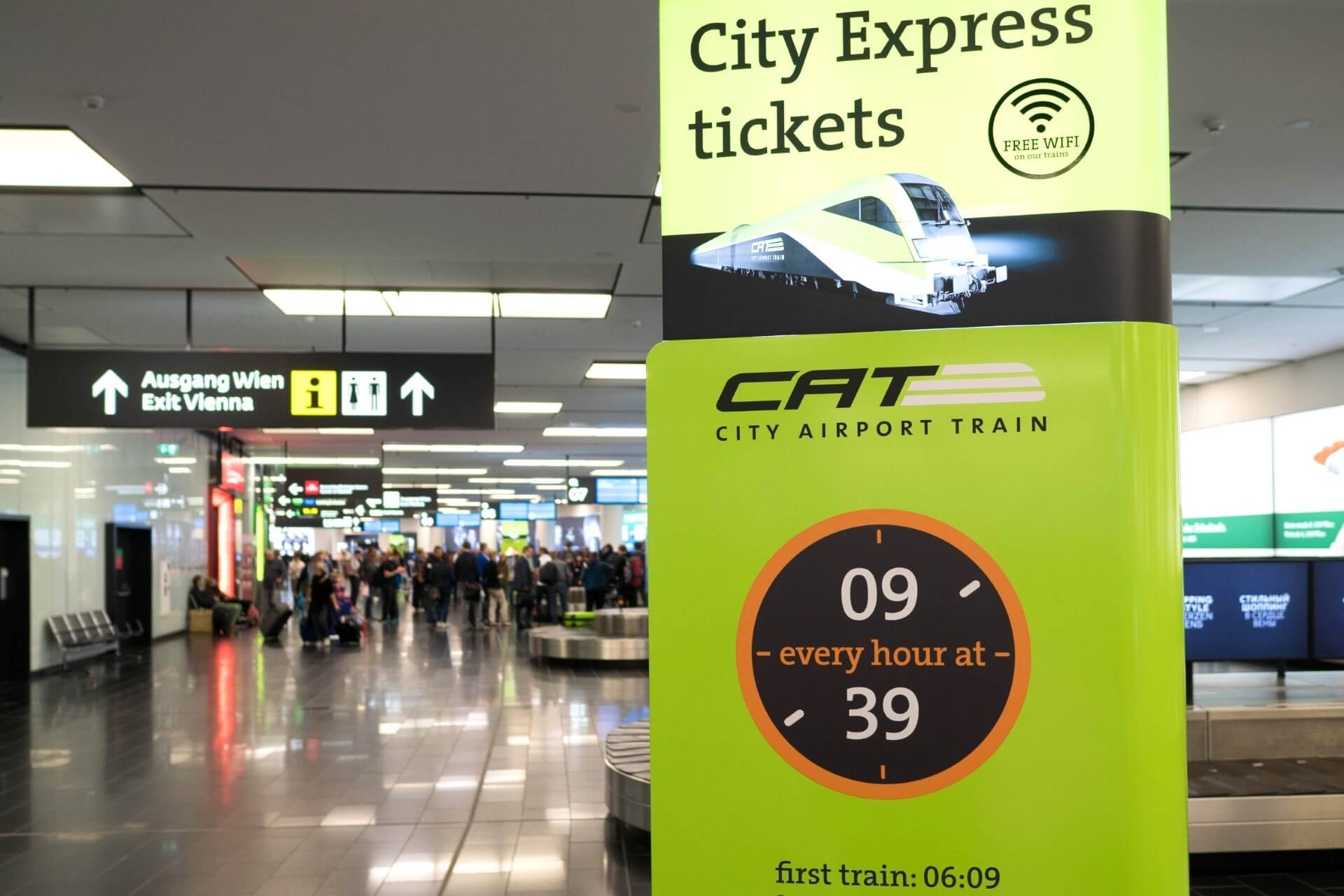
The distance between them is about 16 km. There are several convenient options to cover it. First and foremost, of course, is the taxi. These services operate around the clock. The taxi ride from the airport takes 25-30 minutes, the shortest route being slightly less.
The most convenient car booking services are Uber and KiwiTaxi. Plus, each local taxi company has a website and mobile app. Now let’s consider another option to get to the center: traveling by City Airport Train (CAT). It takes 16 minutes.
This type of transport operates year-round. The only downside of the route: the train does not run around the clock. Its services start at 6:09 AM and end at 11:39 PM. The usual interval for train departures is 30 minutes. However, experienced travelers advise checking the transport schedule in advance, as the transport company may make changes to it.
The train offers free Wi-Fi, a city guide, and access to the latest press. The company’s staff in the waiting area offers children free colorful and fun coloring books. Moreover, note that very close to its terminal in the city center are famous sights, including the Hofburg and Mozart’s House.
Another convenient option is the Vienna Airport Lines (Postbus) buses. The bus ride takes about 20 minutes. The station at the airport from which they depart is easy to find by the name: Flughafen Wien Busterminal. Bus service in this direction starts daily at 4:45 AM and ends at 2:45 AM. The interval between routes is 30 minutes. As for the S-Bahn train, it depends on the destination.
You can reach the Wien Mitte station in 25 minutes or the Central Railway Station in 15 minutes. In the first case, it will be the S7 suburban-city train line, and in the second — the Railjet. The departure interval for both is the same (30 minutes).
Day 1
If you don’t rush, you can see a lot in Vienna’s center in a day: visit palaces, stroll through alleys, admire sculptural monuments, and taste various delicacies in cafes. Plan your day in this manner and see for yourself. A tip for gourmets of all ages: be sure to buy handmade chocolate in pastry shops! It is truly special, unique, and incredibly delicious here.
Hofburg
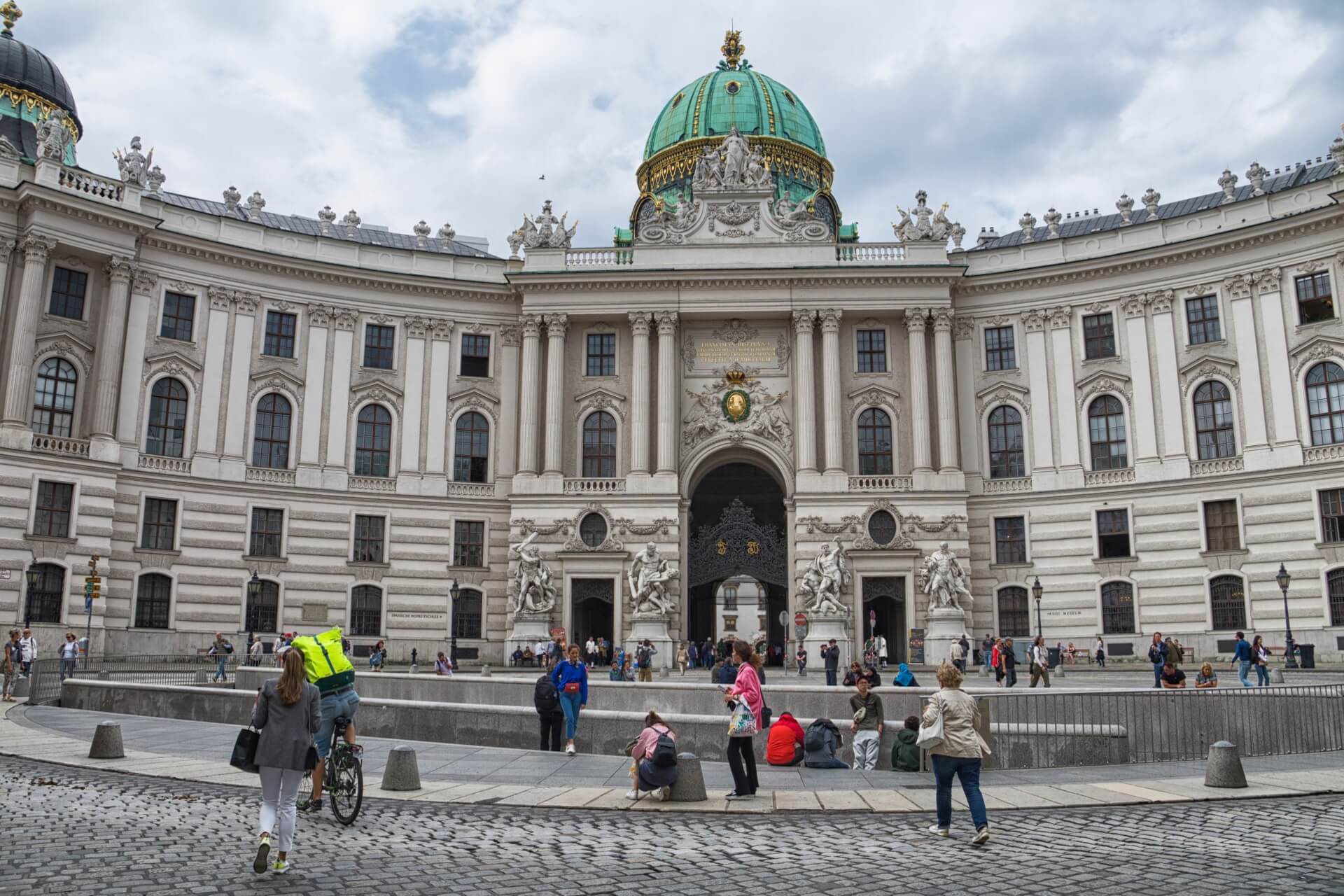
For almost a century, the luxurious palace was the residence of the Habsburg imperial dynasty. Its history began 900 years ago when a castle was built here. Construction work in the Hofburg continued until the beginning of the last century. The result of the “millennium construction” was a palace complex with 2,600 rooms and halls. It includes 19 palaces and 18 buildings from different eras.
The Hofburg is an incredible mix of Gothic, Renaissance, Baroque, Jugendstil, and other styles. Each Austrian emperor contributed to its transformation. Because of this, the Hofburg acquired a courtyard layout and a list of attractions, each associated with a particular ruler.
For example, Emperor Leopold I of the Holy Roman Empire ensured the appearance of a luxurious theater here. His predecessor, Rudolf II, who mystics still consider one of Europe’s greatest prophets and alchemists, ordered the construction of a palace with two clocks.
The total area of the Hofburg exceeds 240,000 m². Many of its rooms serve as the residence of the Austrian presidents. The palace-park complex houses three museums, where you can see imperial treasures (from ancient swords to crowns and scepters), household items of rulers, and learn a lot about the life of the legendary beauty – Empress Sissi. There is also a famous restaurant serving local cuisine.
Note: Photography on the complex’s territory is prohibited. The most convenient way to visit its museums is with a single ticket. You can also see the country’s largest library, a horse monument to Emperor Joseph II, and watch classes at the riding school (the institution has its own museum).
Burggarten Park
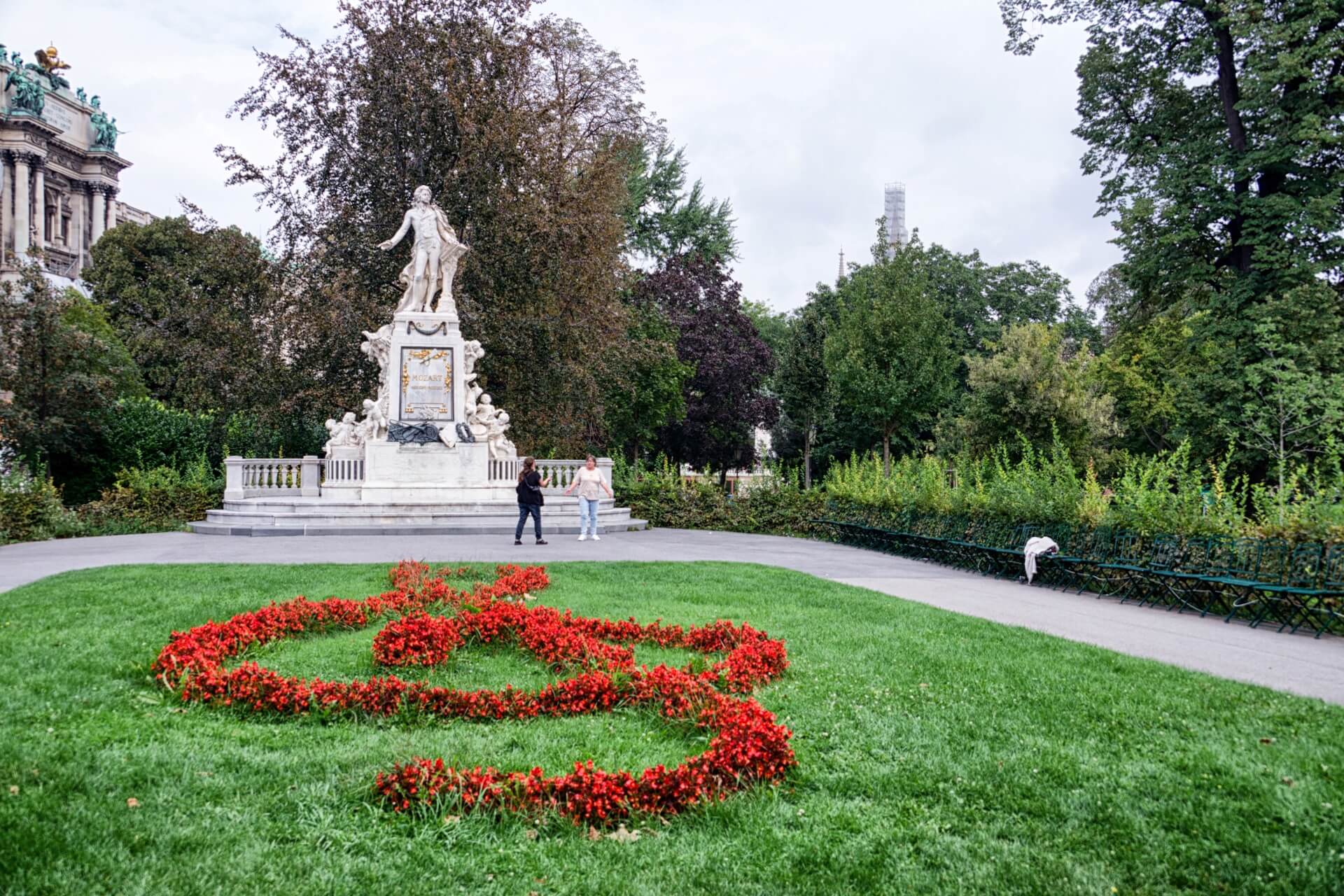
The famous landscape complex adjoins the Hofburg. It can be compared to a huge observation deck with stunning views of the historic part of the city. Once, there was a defensive fortress here, but over the centuries, it was replaced by green plantations, covering an area of 1.4 hectares today.
In memory of those times, Austrians often call the park Fortress Park. The only surviving building from that era (a castle stood here about 700 years ago and was destroyed by an earthquake) is the chapel of St. Blasius. Local restaurateurs managed to perform a real miracle: they restored and preserved the ancient temple building in its original form.
The flower bed shapes in the garden fully comply with the landscape rules of the 17th-18th centuries. Here you can see columns, monuments to people who made a significant contribution to the city and state’s development. The Burggarten’s list of attractions includes a fountain and a 600-year-old house-castle of Mayor Toppler.
Butterfly House
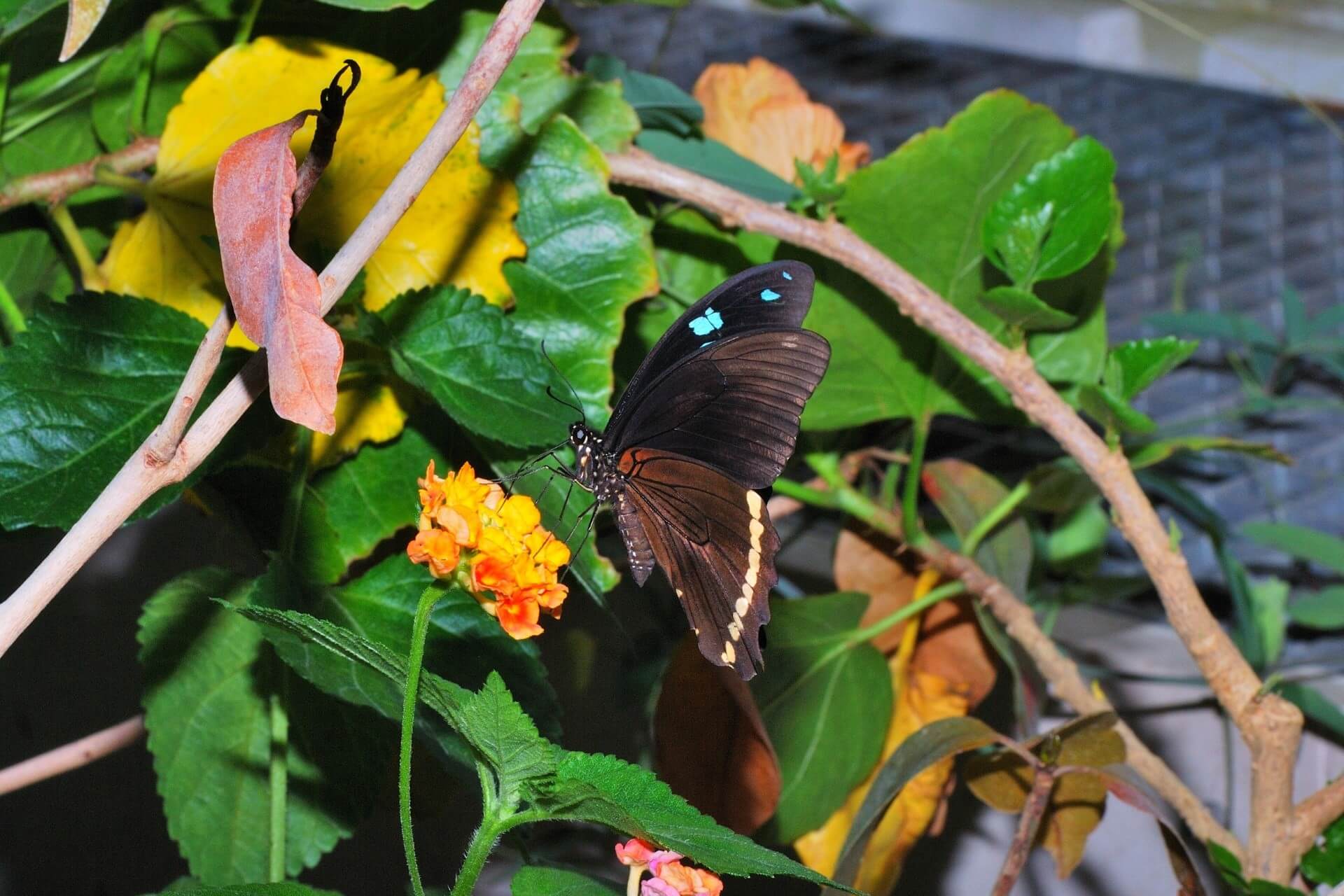
The famous insect nursery is part of the Hofburg palace complex. The Butterfly House recreates tropical rainforest conditions. Nearly 500 exotic butterflies live here, including the peacock eye, whose wingspan reaches 30 cm.
The nursery opened at the end of the last century in the Palm Pavilion, surrounded by ponds and waterfalls. This building was constructed 200 years ago with innovative elements of the time: iron supporting structures. The gallery has been rebuilt several times, and as a result of all the “construction experiments,” the area allocated to the nursery increased to 280 m².
Insects freely fly in their pavilion. They love to show off to visitors and are absolutely not afraid of people. Also, an interesting collection of tropical plants has been assembled here. They have perfectly adapted to Central European latitudes.
Heldenplatz
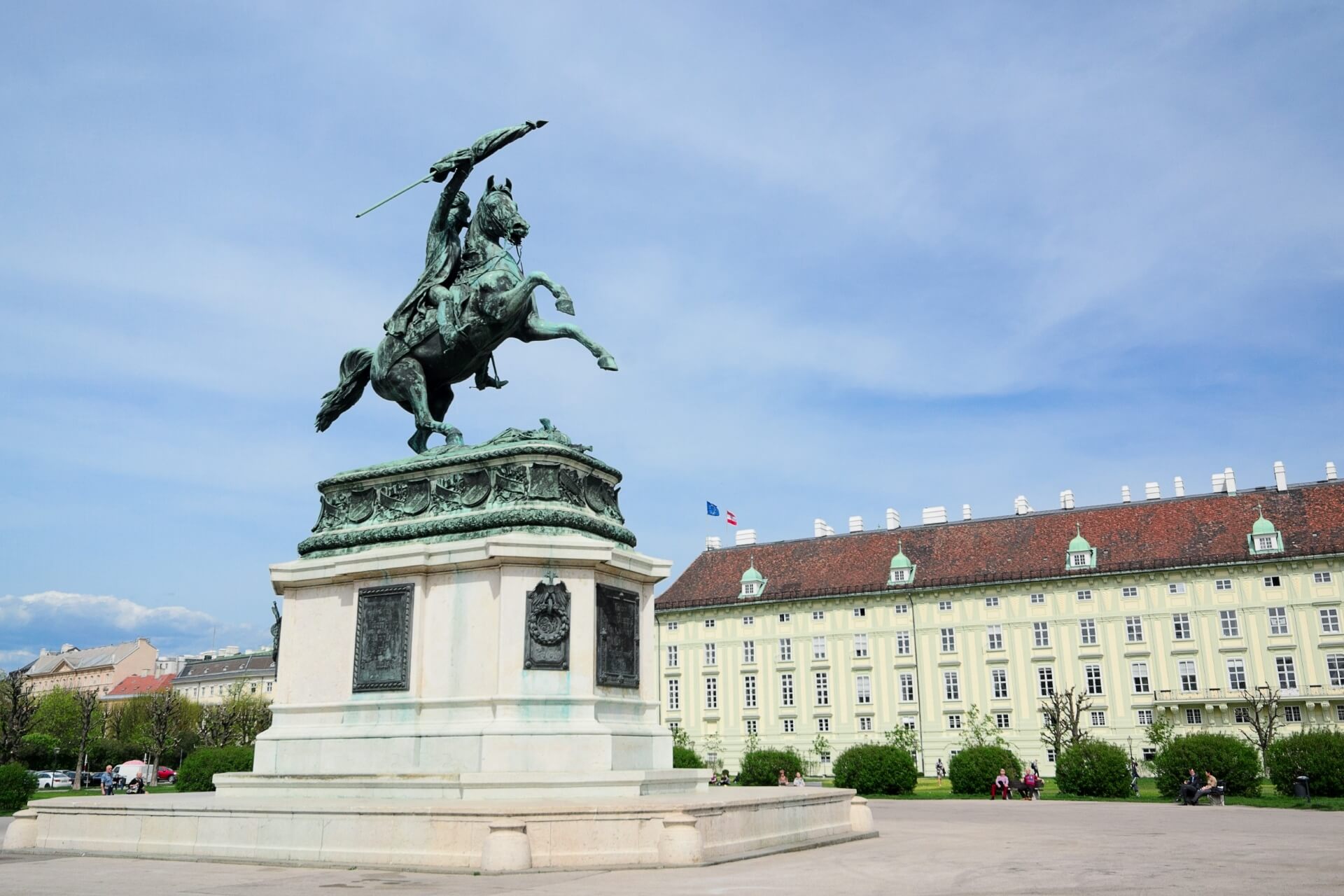
This architectural monument is also part of the Hofburg. The Heroes’ Square resembles an ancient Roman forum in its layout. It was supposed to become part of a huge new complex built in the antique style 200 years ago. The grand plans were not realized. They were limited to building Heldenplatz.
The square is surrounded on three sides by famous Viennese attractions: the Leopoldine Wing, the New Castle, and the Outer Castle Gate — the Heroes’ Arch (the square’s name is associated with it). There are no buildings on the fourth side, so this place serves as an observation deck with excellent views of the town hall, parliament, and court theater. In the center of the square are two monuments to outstanding military leaders: Prince Eugene of Savoy and Archduke Charles of Austria.
This place is also tragic for many Austrian families. In the 1930s, Hitler announced the annexation of Austria to Germany here. The Anschluss led to the country’s population being drawn into the bloody carnage of World War II. Catholic priests were destroyed in annexed Austria, along with Jews. The arrival of the new authorities caused a split in Austrian society, bordering on civil war.
Demel Confectionery Cafe
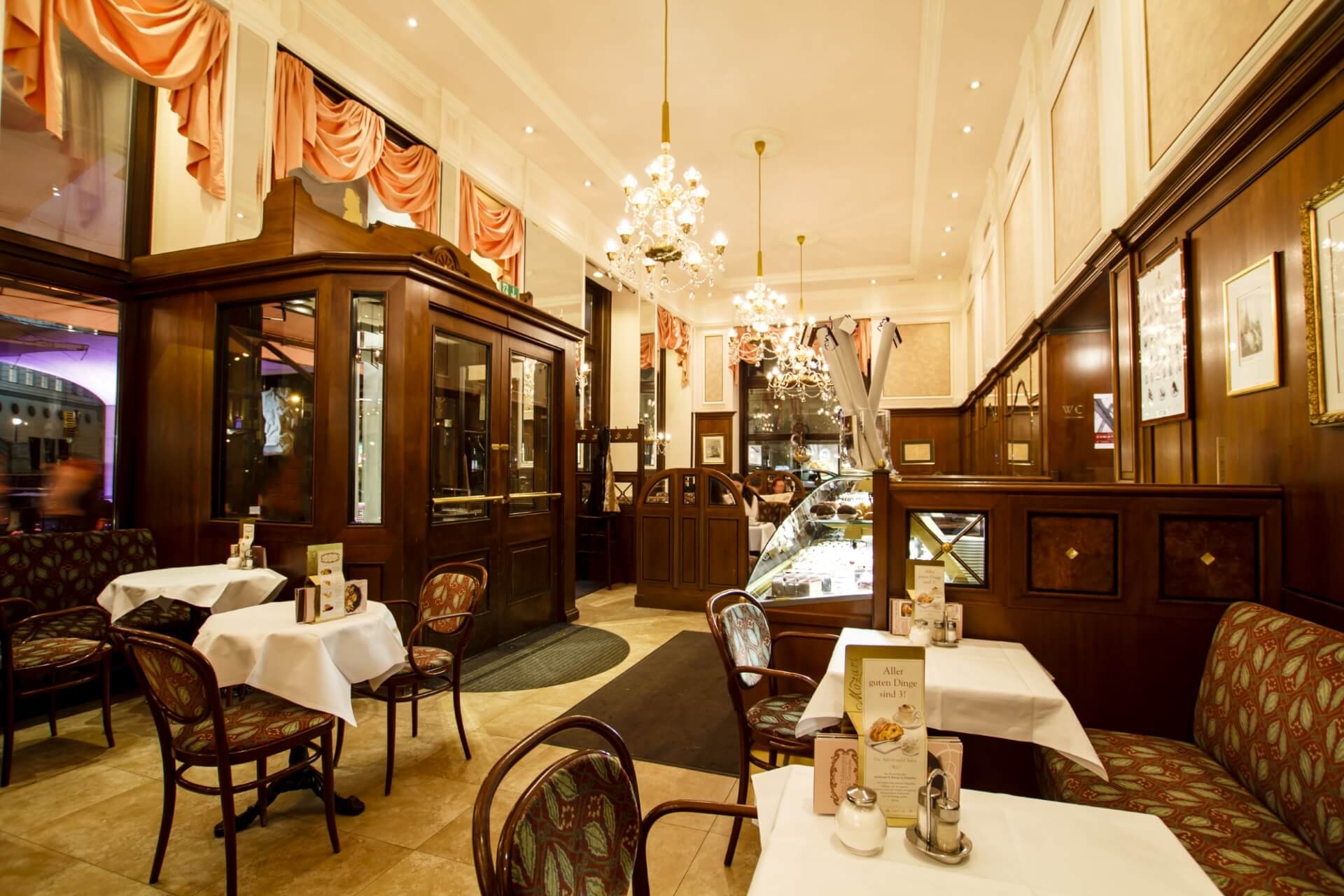
For gourmets, this establishment is one of the city’s symbols. Its history began in 1778. The family business changed addresses several times. However, its former status still says a lot. The Demel Confectionery Cafe was a supplier to the imperial court. The Habsburgs ordered sweets here for balls and palace celebrations.
Today, you can buy various treats prepared according to old recipes. Interestingly, Paris significantly influenced its menu. The French novelties appealed to the locals, so in some cases, it’s even difficult to say which state is the homeland of a particular delicacy from Demel.
In the cafe building, you can see the setting where Empress Sissi tasted pastries. The furniture inside its rooms is made of mahogany. The numerous mirrors enhance the sense of luxury in the confectionery’s halls. In the last century, high society still gathered here, but in the new millennium, the atmosphere has become more democratic.
There are two reasons for this: the confectionery now belongs to a bank, and the previous owner’s idea to turn it into a closed elite establishment failed miserably. To be honest, that aristocrat-entrepreneur turned out to be an ordinary criminal and received a life sentence for his “artistry.”
But back to the positive: be sure to try Empress Sissi’s favorite treat at Demel — candied violet petals. The confectionery also bakes molded gingerbread, apple strudels, and makes incredibly delicious almond-orange cakes.
Vienna State Opera
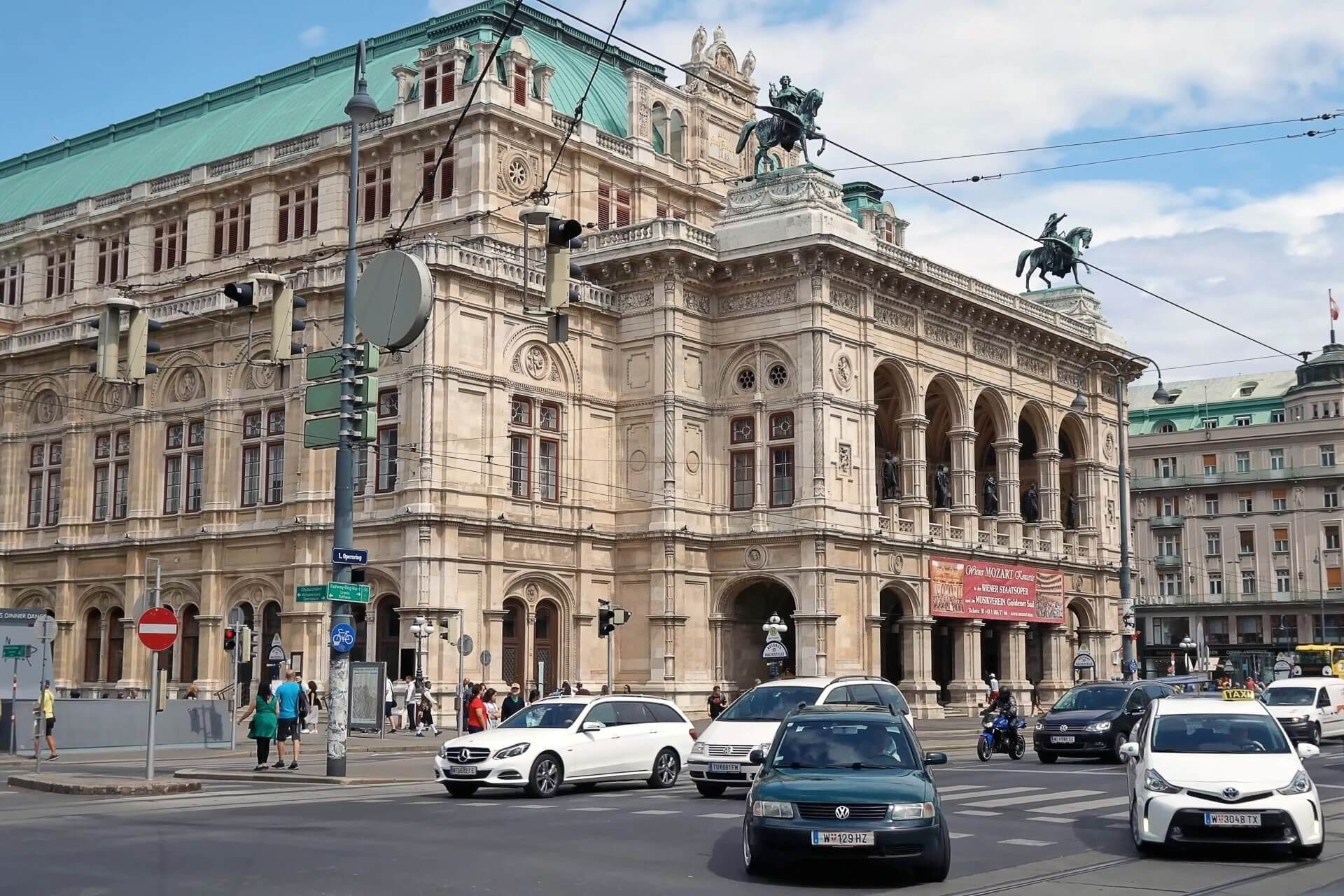
The history of this famous concert venue began almost 400 years ago. Later, a special building was erected for it. Representatives of the Habsburg dynasty personally supervised its construction. Emperor Franz Joseph and his wife Elisabeth of Bavaria, whose beauty remains a standard of femininity to this day, were present at the first performance of artists here.
In 1945, the building was damaged during a bombing, but restorers managed to fully restore it. Nowadays, famous annual balls are held here. As for the theater’s repertoire, it consists exclusively of classics. The list of works performed on this stage was finalized by 1944. Since then, the Austrians have not changed it by a single item.
Plague Column
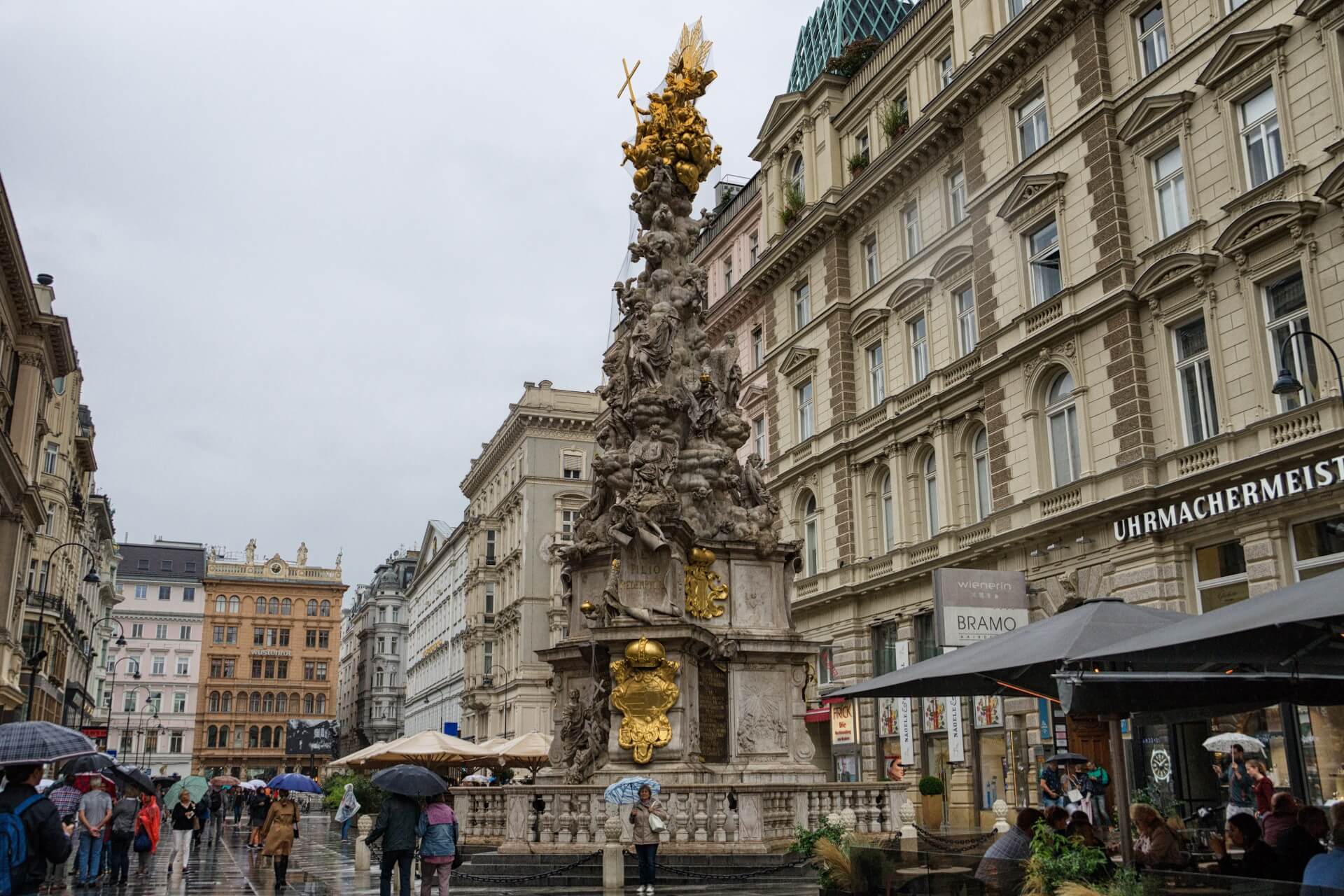
Similar monuments can be seen in different parts of Europe. They remind of the times when the plague raged in states and up to 70% of the population died out. The columns are a sign of Christians’ gratitude to God for the end of epidemics. Most of these European structures, including the Viennese one, were built in the Baroque style.
The sad Austrian monument looks very festive. It is decorated with coats of arms, clouds, angels, figures of saints, so there is a feeling that the monument is floating in the air. The main difference between the Vienna plague column, installed in 1679, and its European counterparts is the statue of Leopold I in a kneeling position.
Previously, no monarch allowed himself to be depicted like this. The emperor, however, acted completely differently, thereby showing humility, repentance, love for God and the people.
St. Stephen’s Cathedral
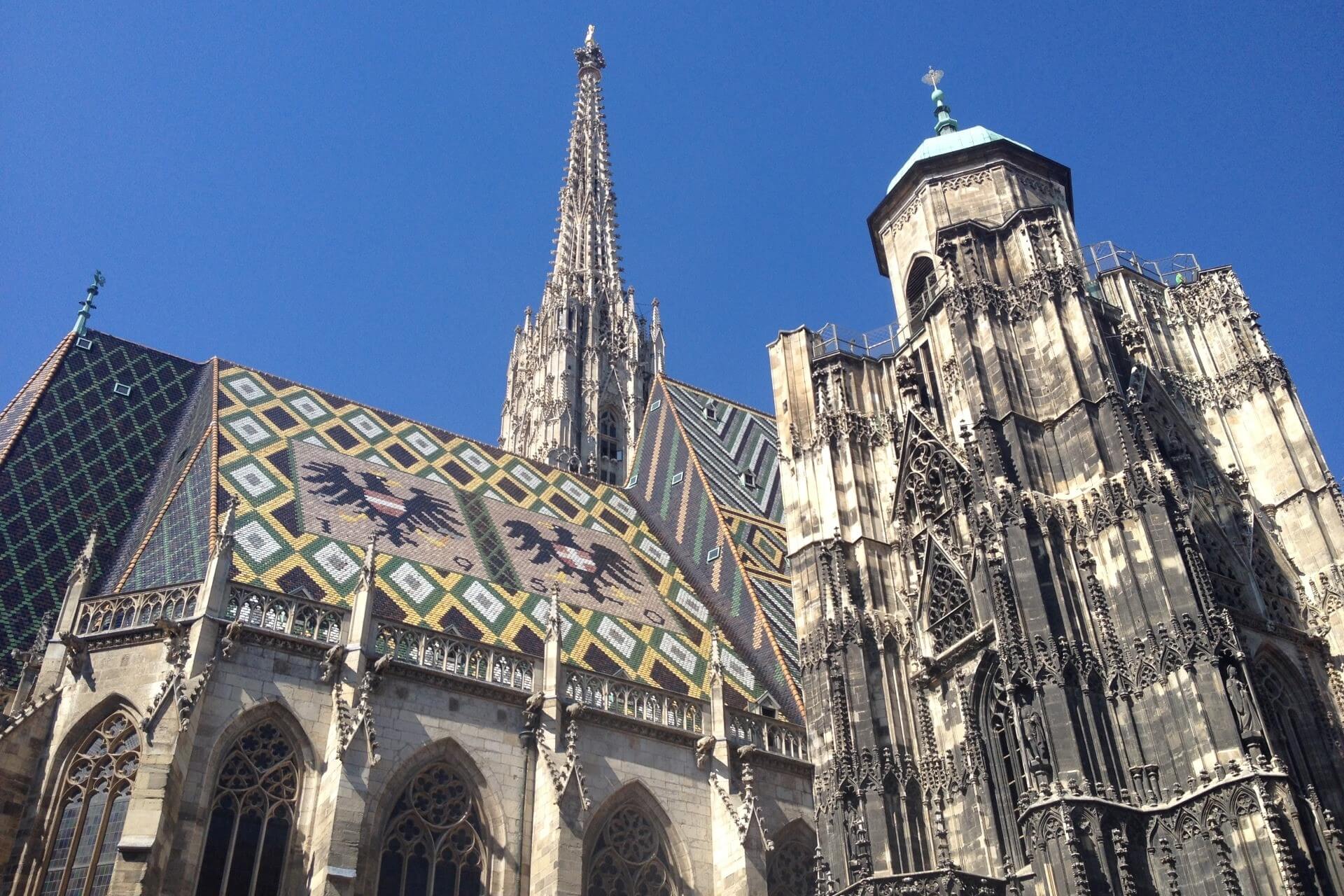
The temple is one of the symbols of the city and country. Its first building was erected almost 900 years ago. It, alas, did not survive. The construction of the current cathedral began 6 centuries ago. Later, significant changes were made to its architecture and layout, but they only benefited the grandiose structure.
During World War II, there was a possibility that the building would finally disappear from the city map. It was severely damaged by bombings, fires, and looting. And yet, somehow, Christian relics, including statues and frescoes, survived here. Now the height of the tallest South Tower of the unique building is 136.44 m. Its roof consists of 230 thousand colored tiles. They form an image of the state coat of arms.
Now there are 23 bells in the cathedral’s bell towers. Two of them strike the time. Organ music is played during services, and during daylight hours, the sundial on the outer wall reminds parishioners that it’s time for prayer. The ashes of Austrian rulers and church hierarchs rest here. One of the main relics of the temple is the miraculous icon of the Mother of God of Pócs.
Other famous attractions of the structure are its observation decks in two towers: South and North. The second is located lower than the first. To get to the South platform, you need to overcome 343 steps. But to the North, where the largest European church bell (Pummerin) is located, you can take an elevator.
Mozart House

This is one of the legendary places on the planet’s map for all fans of classical music. Nowhere else in Europe are there buildings left where the great composer actually lived. The fate of the genius was sad: he managed to get rich, but for some reason died in poverty. His relatives hid his burial place so carefully from the townspeople that it eventually became unknown.
The mysteries of Mozart’s departure to the other world and the creation of his brilliant works still excite the minds of historians and art critics. The version with Salieri turned out to be a failure, but the composer was possibly killed due to the jealousy of his deceived wife. The double love triangle, which involved the musician’s wife, her lover, and her own sister, was no secret to any of the townspeople. Mozart’s connections with Freemasons and secret orders of alchemists added fuel to the fire of that tragedy.
There are legends that evidence of those boiling passions has been preserved in the walls of this building (the composer rented several rooms in it). In reality, it was just an ordinary family nest at the time, and nothing foreshadowed trouble.
It was here that the genius’s famous works were written, including “The Marriage of Figaro”. Today, the museum dedicated to the composer occupies 3 floors of the mansion. It houses items belonging to that era, restored historical interiors, and exhibitions dedicated to Mozart’s life and work.
Vienna House of Arts
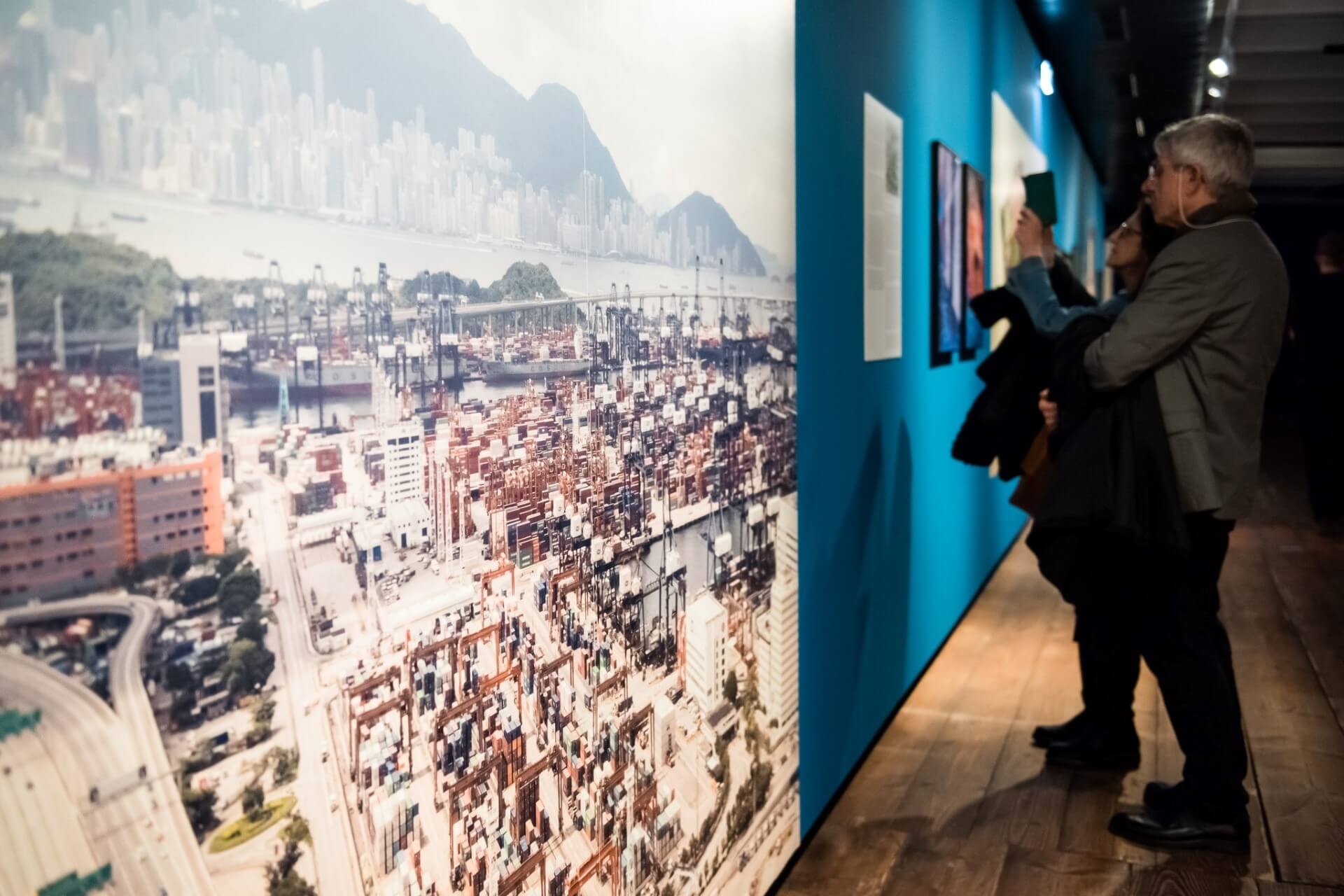
It should be immediately clarified that the house created according to the project of architect Hundertwasser is often confused with his museum. The buildings are located near each other. The correct name of the museum is the Vienna House of Arts. It fully corresponds to the aesthetic ideals of the artist and his unusual views of the world, which is why there was confusion with the names.
Both structures are known far beyond the country. For fans of classical architectural styles, they look like living nightmares. But supporters of avant-garde trends are completely delighted with such unusual solutions.
Hundertwasser advocated for the abolition of straight lines in art and was famous for his eccentric antics. The construction of his kitsch masterpieces found support from local authorities precisely because the world began to fashion buildings with a nature-preserving, ecological environment. This is how multi-story houses-mixtures of balconies, onion towers, windows of different sizes, fountains, live shrubs and trees appeared on Austrian streets.
The museum nowadays is a place for photo exhibitions and creative meetings. Souvenir shops, which are called Hundertwasser Village, are open next to it. You can buy bright accessories there and visit the toilets. The second point will also be paid, because the plumbing and furniture of the rooms for hygienic procedures are comparable to museum exhibits.
Day 2
These days, it is better to dedicate to Vienna’s museums. To avoid tiring your soul from exhibition halls, nature’s marvels, and numerous art masterpieces, experienced travelers recommend combining museum tours with leisurely walks through squares and visits to observation decks.
Belvedere Palace Complex

The architectural ensemble can be compared to a hymn or a baroque style standard. 300 years ago, this complex was an ordinary residence of Prince Eugene of Savoy, but even then, its luxury rivaled many royal palaces.
The Belvedere has experienced years of neglect, but it has survived to this day in perfect order. It is now divided into Upper and Lower parts, each with its own palace. Another famous attraction of the complex is its luxurious garden. A greenhouse here still houses 4,000 plants from all Alpine regions.
In the Lower Palace, you can see the prince’s living quarters, reception rooms, and stables. It exhibits items from the imperial art collection. The Upper Palace is more formally arranged — for ceremonial life. However, it also has its art collection. Here you can see masterpieces by Biedermeier artists and works by contemporary Austrian masters.
Karlskirche
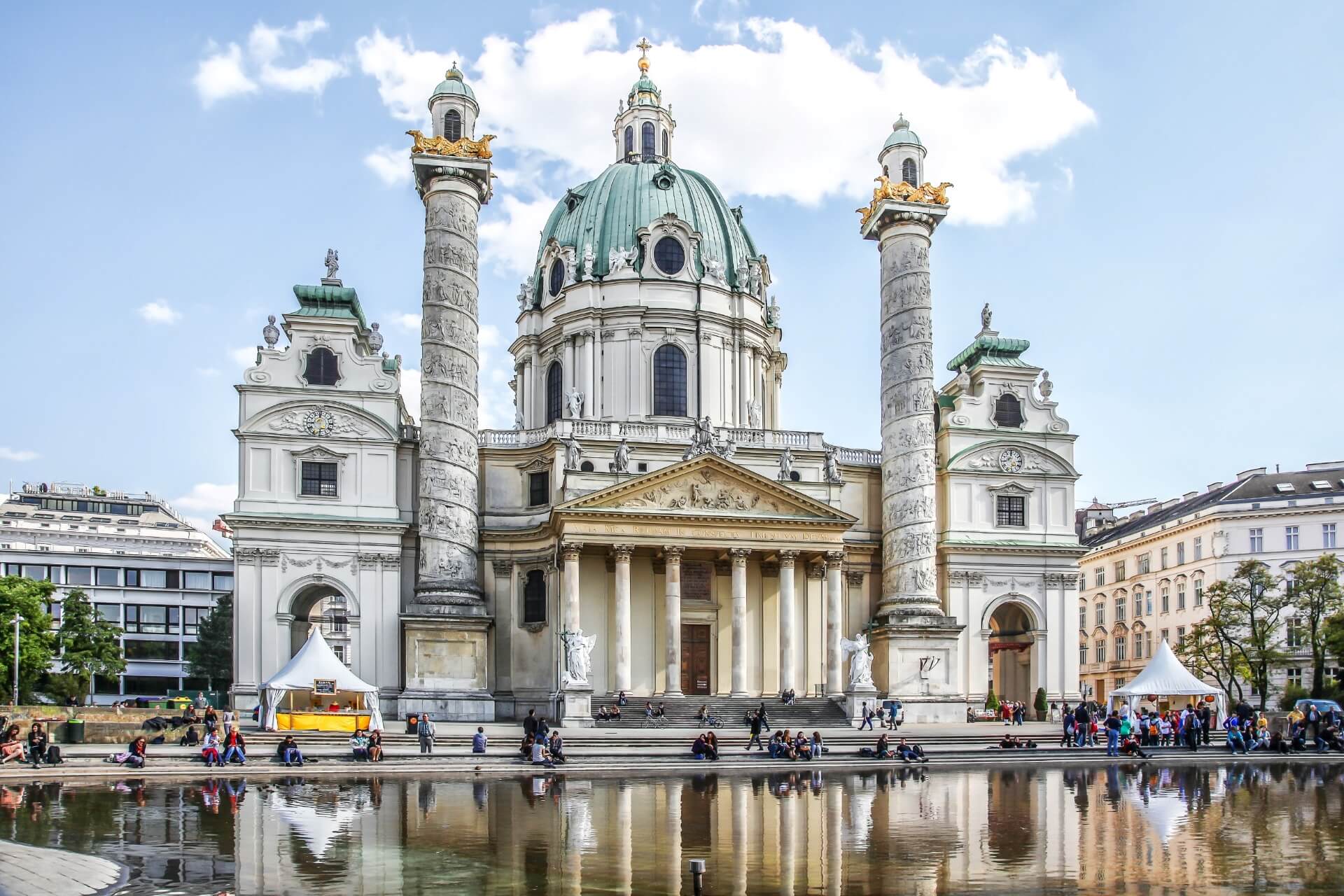
The 72-meter church reminds of the victims of plague epidemics. The Catholic church, built in the baroque style over 300 years ago, was constructed by order of Emperor Charles VI. He promised to donate money for Karlskirche if the plague epidemic stopped. The miracle happened, and thus a new church appeared in the city.
The building is dedicated to St. Charles Borromeo (the emperor considered him his heavenly patron and deeply revered him). Remarkably, even in church construction matters, the Habsburgs remained true to themselves. This building with gilded domes, decorated with frescoes, figures of angels, and Christian virtues, reminds (through various symbols) of the dynasty’s claims to… world domination.
Inside the church, there is an elevator, making it easy to reach the church’s observation deck. Its visit allows you to see the city from a bird’s eye view and admire the famous historical monuments around the building.
Museum of Art History
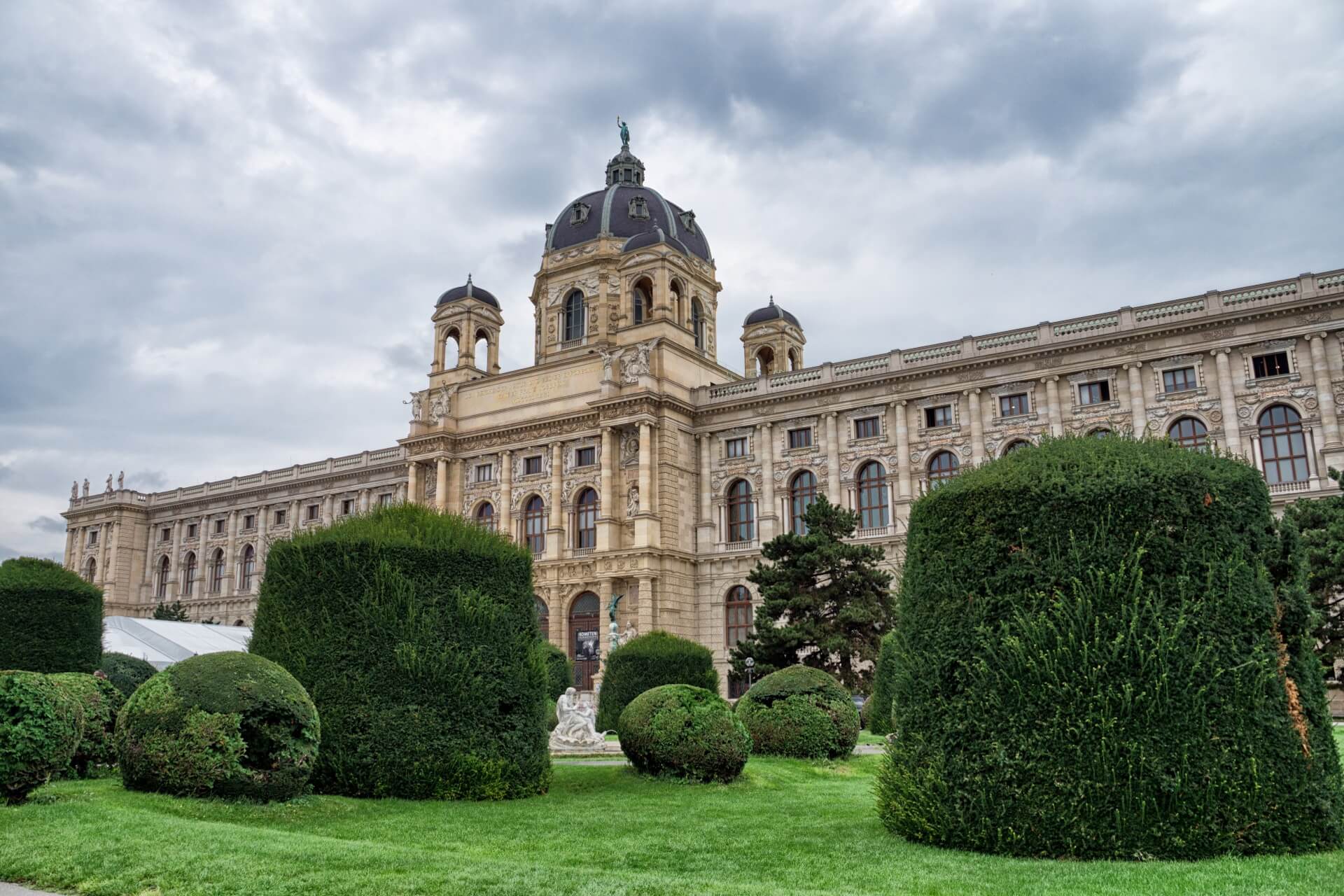
The art venue is less than 150 years old. This building appears to be a close relative of the Museum of Natural History, located opposite it. Both neo-renaissance monuments harmoniously fit into the city’s architecture. Without these palaces, it is now very difficult to imagine Vienna.
The museum exhibits art masterpieces from Prince Eugene of Savoy’s collection. Here you can see paintings by French, Spanish, Dutch, and German artists on biblical themes. The museum houses famous works by Raphael, Moroni, Caravaggio, Titian, and other great Renaissance masters.
Austria still holds the status of a cultural empire of Europe. Only in its Museum of Art History can you see the largest collections of works by Rubens, Snyders, and Bruegel the Elder. A special place in this museum collection is occupied by paintings created in the mannerism style. It was the “bridge” between the Renaissance and Baroque. Austria became the place where mannerism flourished, and collectors managed to preserve many masterpieces created according to its canons.
Maria-Theresien-Platz
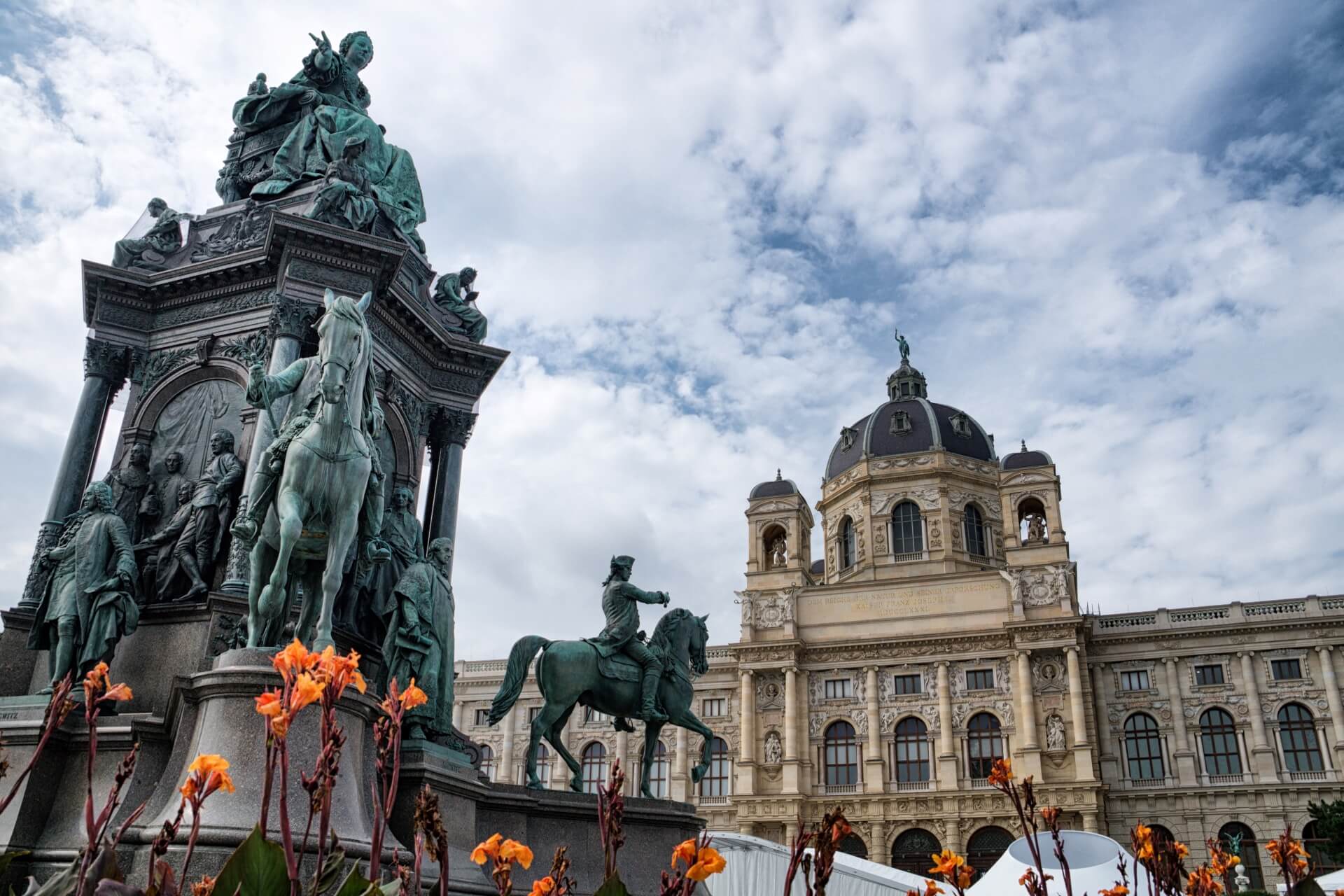
The architectural monument is located next to the art and natural history museums (they are on either side of Maria-Theresien-Platz). Nearby is the famous museum quarter.
The square is one of the most popular pedestrian zones in the Austrian capital. Maria-Theresien-Platz looks majestic and cozy at the same time. The architectural ensemble is less than 200 years old, yet its authentic old-world atmosphere surprises, captivates, and enchants.
Here you can see a monument to Empress Maria Theresa, almost 20 meters high. The legendary woman is depicted surrounded by her closest associates and Christian virtues. Sculptures and bas-reliefs with images of outstanding military leaders, scientists, composers, and musicians from her era are installed here.
The beautiful Empress Maria remains an ideal woman for Austrians even today. She once saved the state from destruction and made Austria a strong player on the European political field again. Her main principles in governing the country were strict economy on luxury and support for talented people. Maria Theresa gave birth to 16 children and lived just over 60 years. Until the last day of her life, she cared for the state, family, and subordinates.
Museum of Natural History
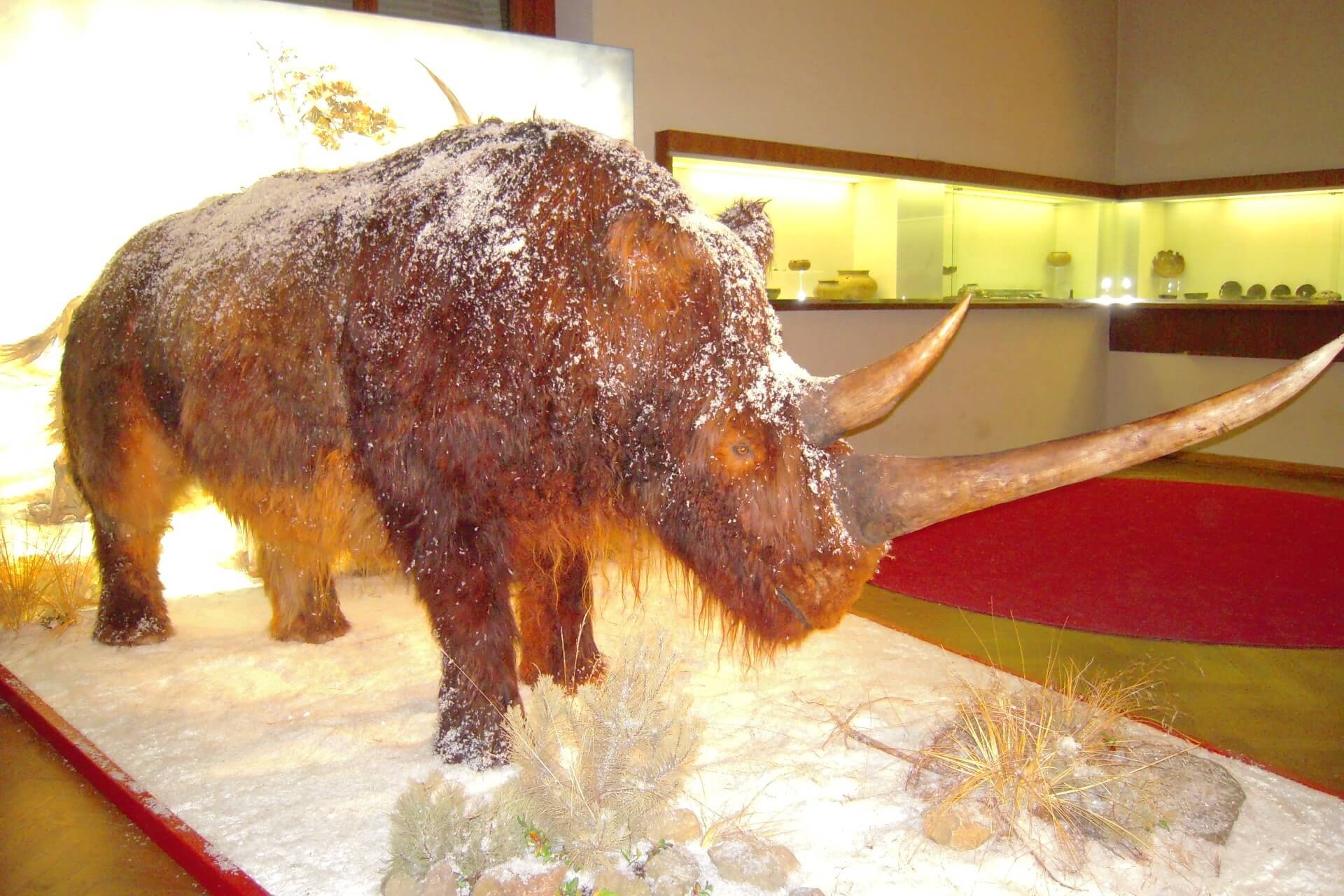
The museum venue is one of the largest in the capital. Its second name is the Museum of Natural History. The unique collection’s foundation was the personal collections of the Habsburgs. Notably, the desire to possess curiosities often played interesting tricks on the famous family.
For example, the husband of Empress Maria Theresa once managed to buy 30,000 unique items from a scientist: precious stones, corals, fossils, etc. However, he was afraid to tell his wife that new curiosities required space (in the palace already overflowing with various masterpieces). And the Empress, in turn, majestically and tactfully ignored the mess caused by her husband.
Sooner or later, all men in the imperial family became fanatic collectors. As a result, the situation reached the point where the Hofburg began to turn into a warehouse of curiosities. To regulate this problem, the Habsburgs decided to build new palaces for their collections. They placed those 30,000 items in one of them.
Now the Museum of Natural History, which began with those things, occupies 39 palace halls. Here you can see a 30,000-year-old sculpture of the earth mother, a diplodocus skeleton, petrified trees, stuffed extinct animals, and many unique items.
Today, its collection continues to grow, and perhaps soon, the Austrian government will be faced with the necessity to build another building.
Museum Quarter
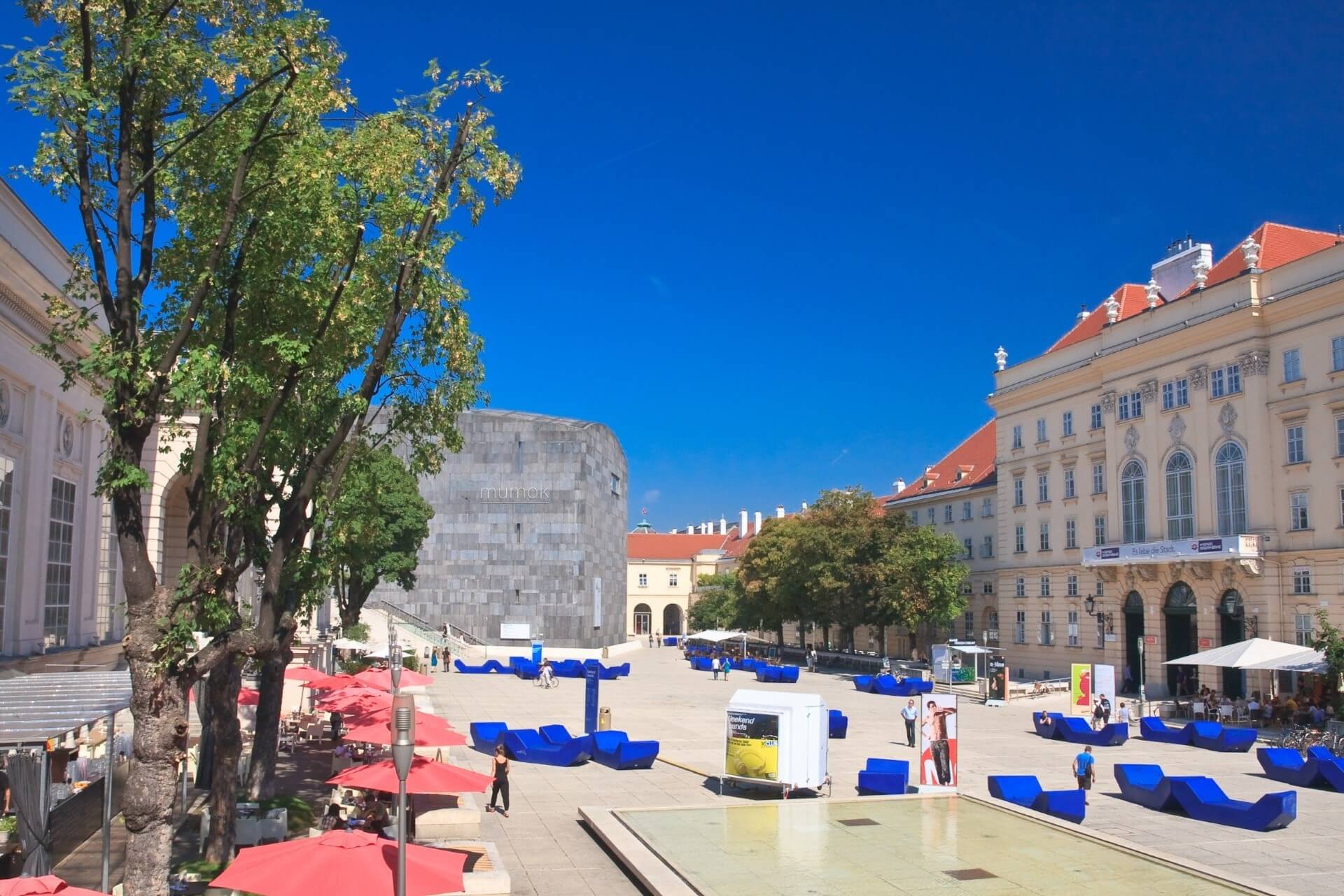
The total area of the complex is 60,000 m². Its main building (very majestic and powerful) is the former imperial stables, built almost 300 years ago.
Austrians are very respectful of everything related to the Habsburg dynasty. They did everything possible and impossible to preserve this building in its original state. It even reached the point where Vienna residents held mass protests against new buildings that the local authorities planned to construct near the stables.
The famous quarter unites three adult museums and one children’s museum. Many of its exhibitions are dedicated to contemporary art. The art space is interesting because its organizers managed to harmoniously combine seemingly incompatible things.
Here you can learn about urban planning achievements and interact with nonconformists, see Schiele’s paintings that provoke emotional outbursts in many, arrange a romantic date in a cozy inner courtyard, and just have a good time. Also, the museum quarter is one of the few places on the planet where authentic items from Peter Ludwig’s collection are stored: Picasso’s paintings and masterpieces of antique and medieval Christian art.
Vienna Secession
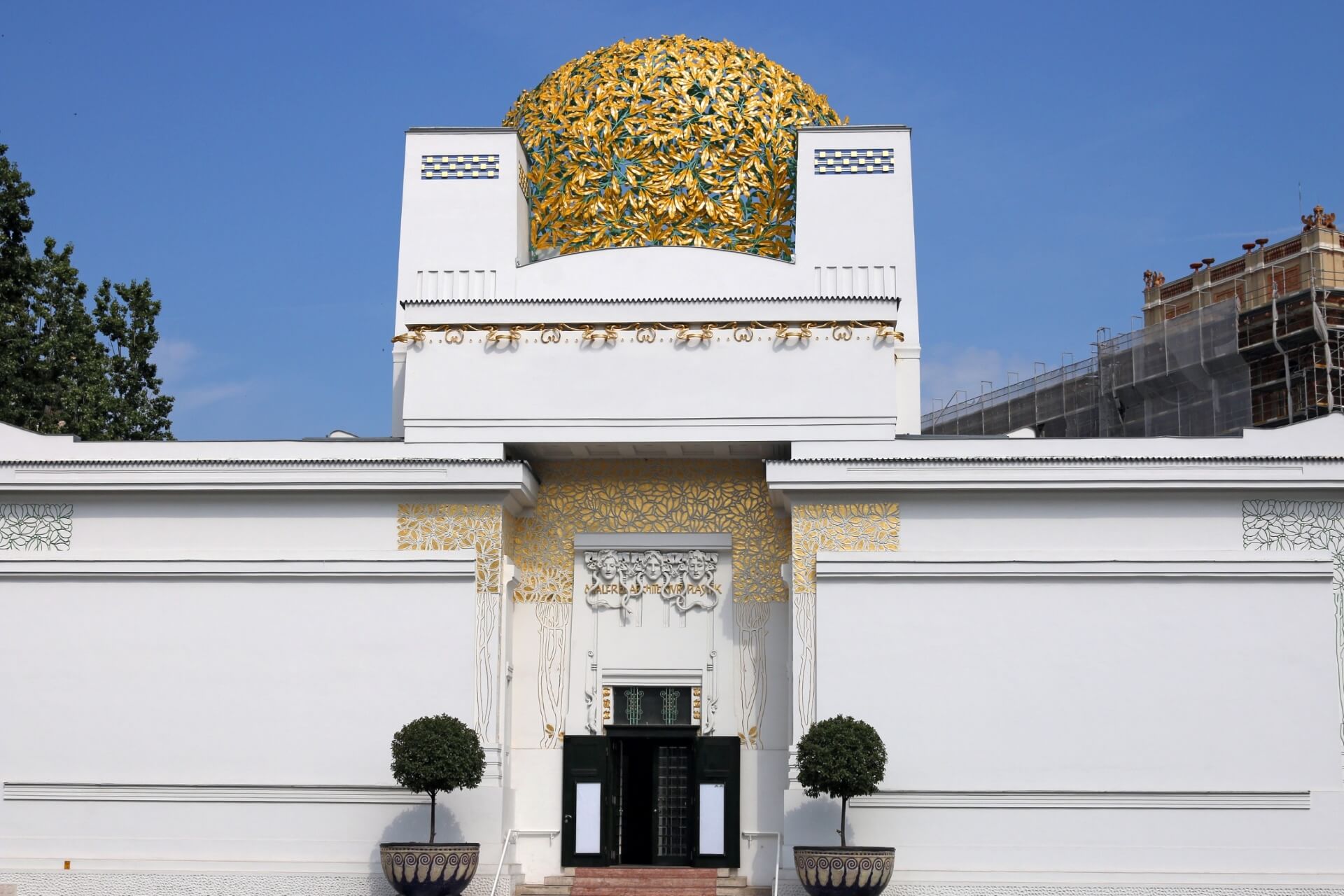
This term refers to both the exhibition space and the creative association of artists who created it. The organization’s history began 130 years ago. Then, representatives of various art fields and businessmen decided to combine their efforts to organize exhibitions and show Austrians new forms of creativity.
The theme of artistic freedom from stereotypes and canons was relevant at that time. After 30 initial exhibitions held by the association, European countries began talking about Austrian innovative ideas.
The association lasted seven years and disbanded, but its creative heritage is of great value and potential. The Secession gave the green light to modernists, impressionists, and functionalism supporters. It became a kind of school for many famous patrons.
The building, which belonged to the association, remains a venue for the country’s most interesting exhibitions. Up to 20 exhibitions are organized here annually. They are mainly dedicated to modernism, but you can also see works in geometric abstraction, functionalism, techno, and other styles.
Town Hall
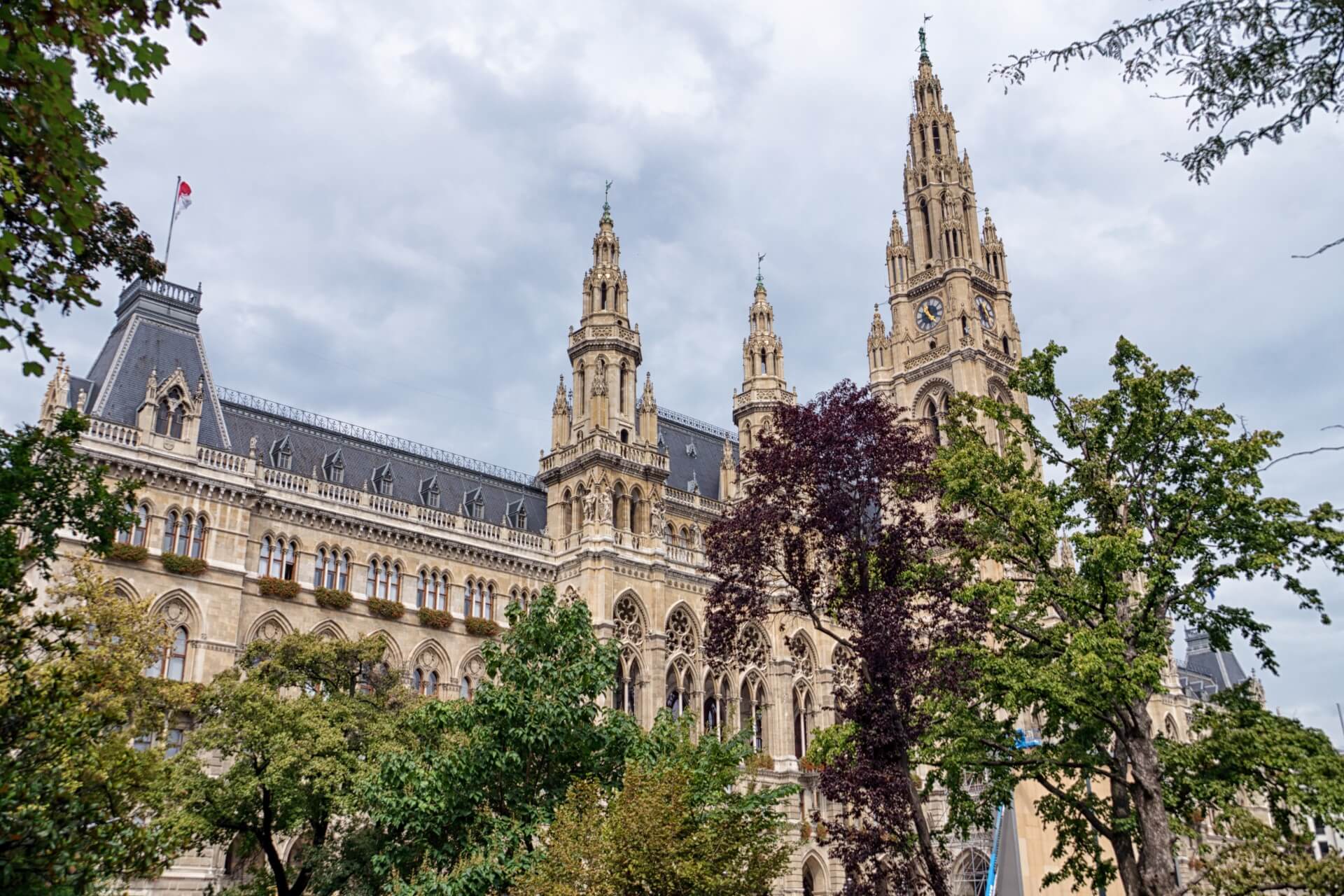
The building, combining eclectic and neo-Gothic styles, was built at the end of the 19th century. Its architecture includes Baroque elements, giving the architectural solution a clear political context.
The building’s construction is linked to a story where local authorities entered into an unspoken conflict with the Habsburgs. Each side was dissatisfied with the location for the new town hall. As a result, the monarchs yielded to the townspeople, and Baroque-style courtyards appeared in the administrative building’s architectural design. They hinted to the Habsburgs about the inviolable liberties of medieval towns.
The town hall building has over 1,500 rooms. Its windows exceed 2,000. The height of the tallest tower is 105 meters. The town hall’s grand hall serves as a large exhibition venue where you can see sculptures of outstanding townspeople. This amazing building is guarded by iron knights in armor, giving the town hall a fairytale look and reminding of medieval knightly virtues.
Today, the administrative building serves various functions. The town hall has become one of the country’s most popular art venues, hosting balls, concerts, exhibitions, and events of national and international importance.
Day 3
How to end your tour of Vienna to relax and gain new impressions? Be sure to visit the parks. They are beautiful any time of the year. Here, you can conveniently combine nature recreation with visiting museum, wellness, and sports venues.
Schönbrunn Palace
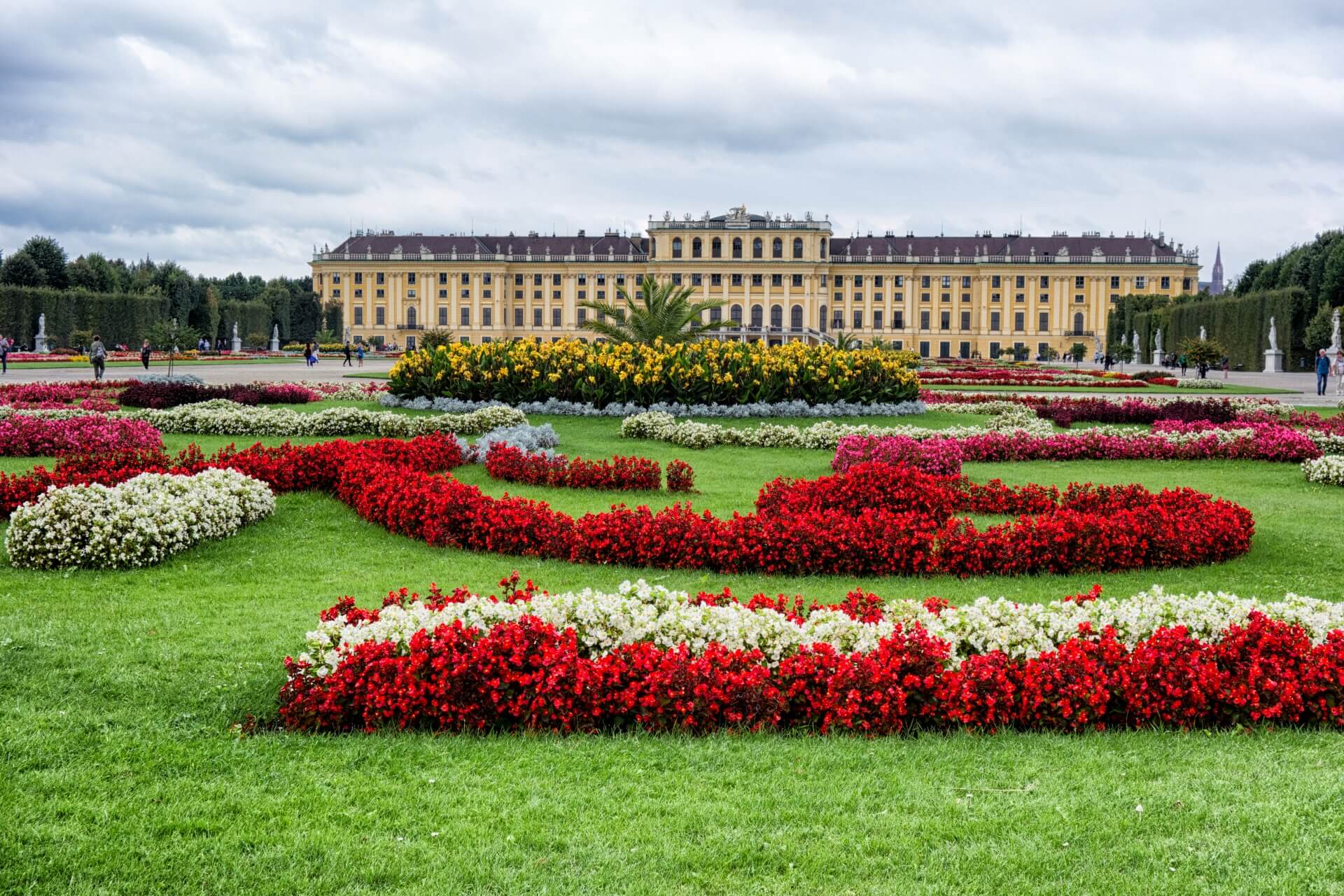
According to documentary sources, the history of the Austrian emperors’ residence began 400 years ago when there was a water mill, stable, house, and garden here. The Habsburg dynasty members decided to buy this place and build a castle. And about 100 years later, it was rebuilt into a palace.
It was one of Empress Maria Theresa’s favorite places. The residence’s history is associated with many famous people. Napoleon stayed here, Princess Sissi rested carefree, and Mozart performed for the public.
The fact that part of the complex was damaged by bombings in 1945 was perceived by Austrians as a national tragedy. The country’s residents did everything possible to restore the unique architectural monument to its former glory post-war.
Today, a museum is open here, where you can see the living conditions of the Habsburgs. The palace complex has over 1,400 rooms, 40 of which are open to the public. The building is surrounded by a magnificent park, which includes a zoo.
Prater
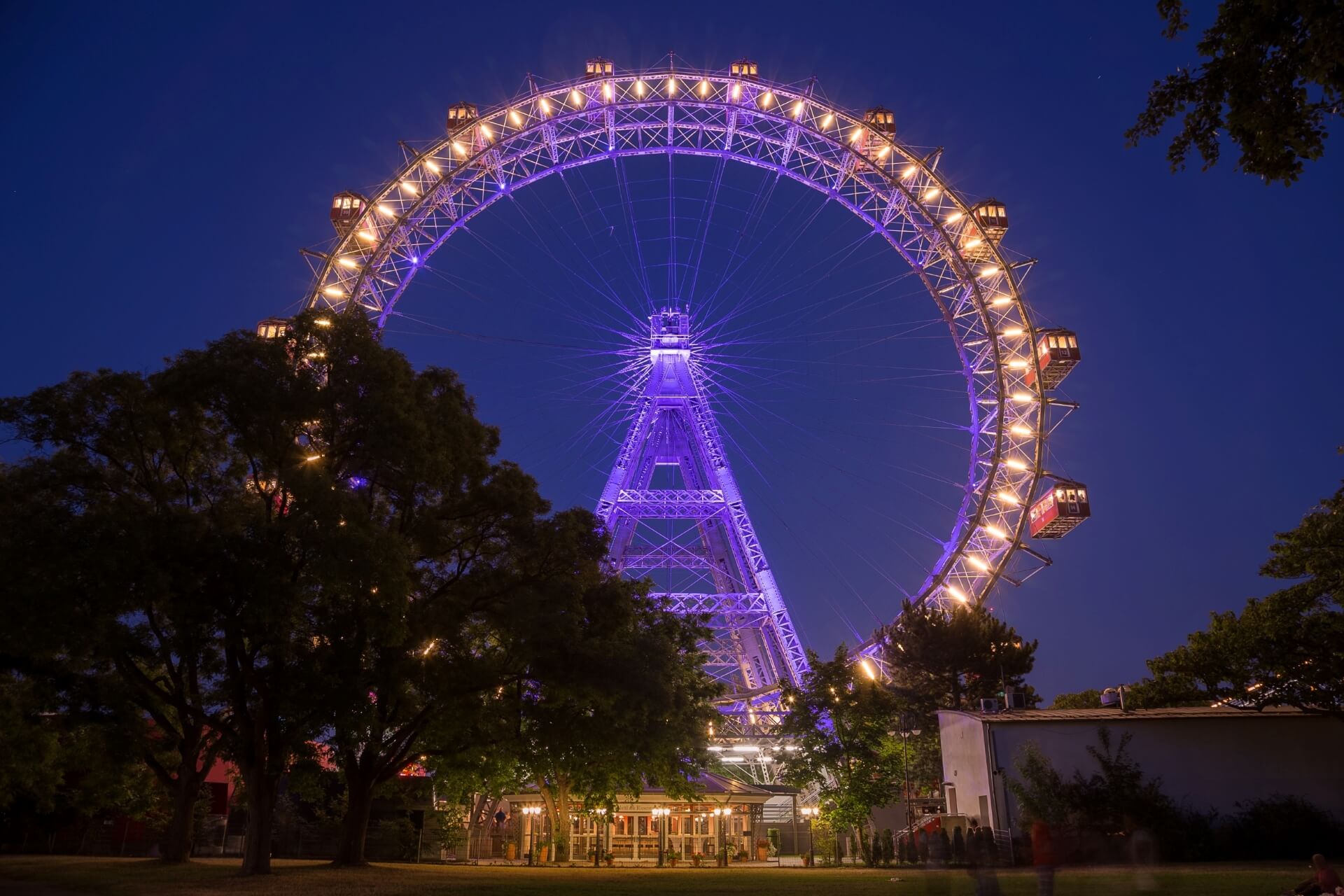
This is one of the best entertainment venues in Europe, where the organizers have successfully combined the protection of living nature with the construction of attractions. Historical documents mention this place almost 900 years ago.
The Habsburgs literally fought poachers here. Initially, they planned to arrange hunting grounds but later decided to create a public park and place various attractions in it. During the imperial era, a café opened here, and large-scale fairs and exhibitions began to be held.
The first Ferris wheel (still in operation) in Prater was built at the end of the 19th century. From its 60-meter height, you can enjoy stunning city views. If you want to ride the world’s highest chain carousel, Prater is the place to visit. This unique attraction reaches a height of 117 meters during motion.

